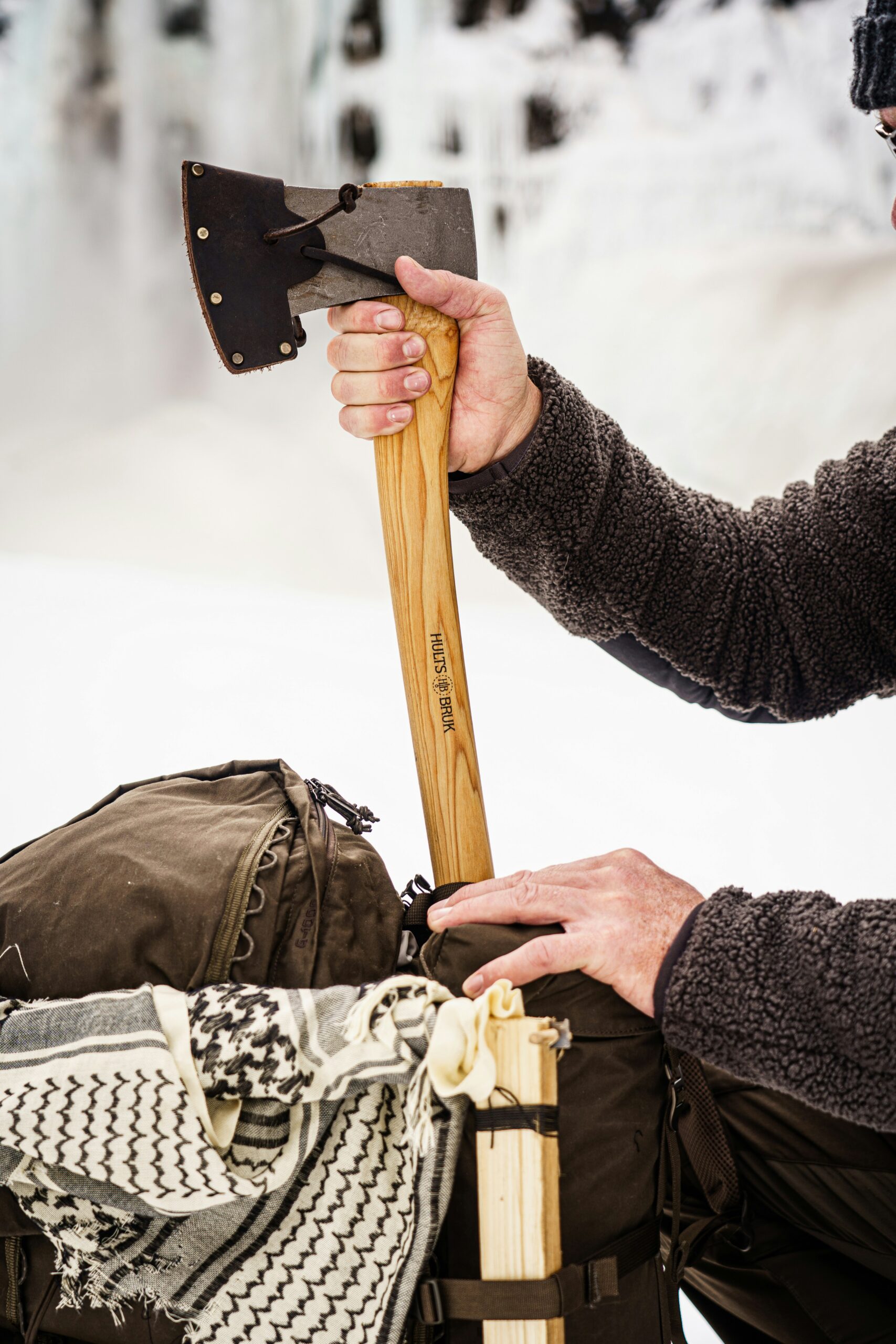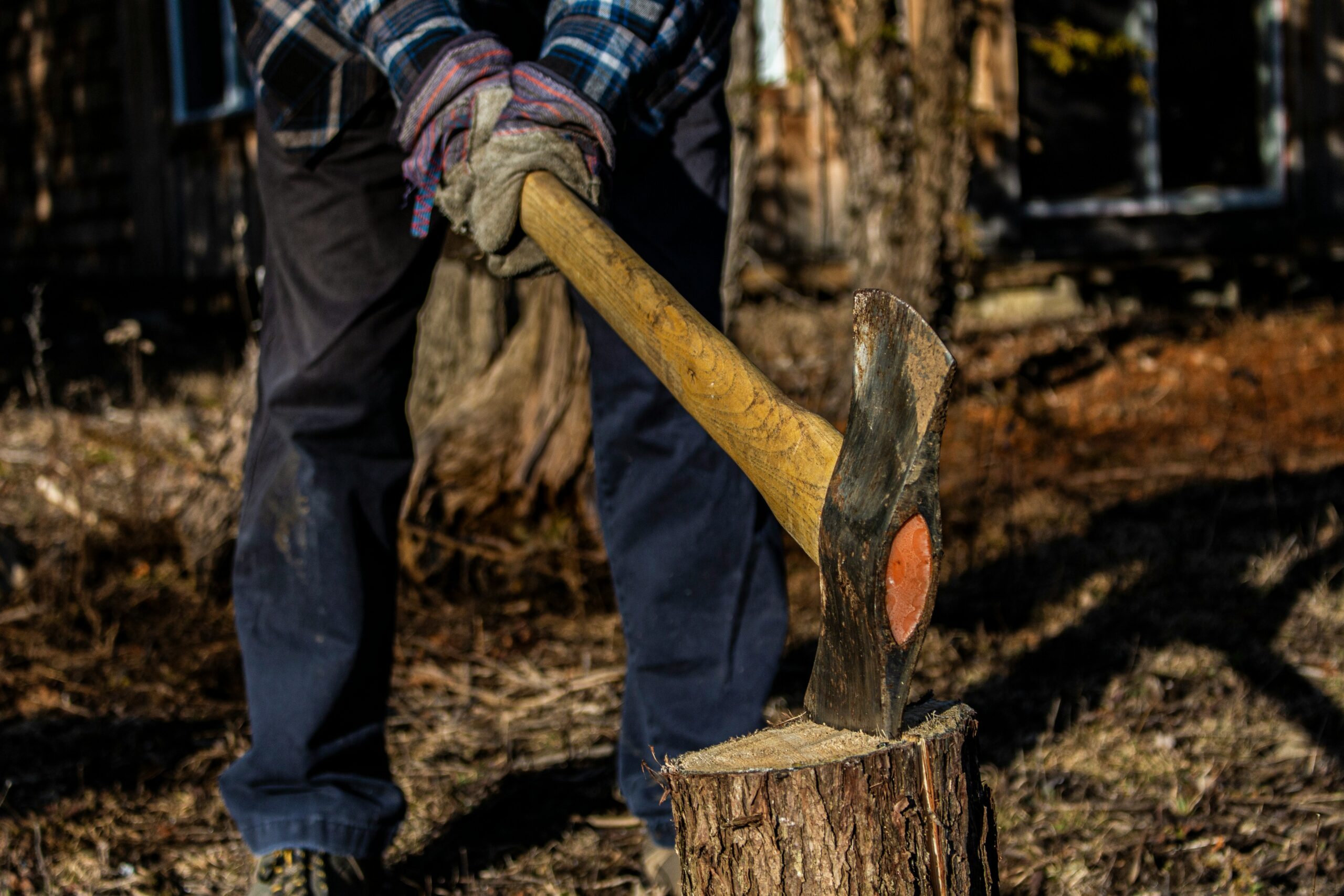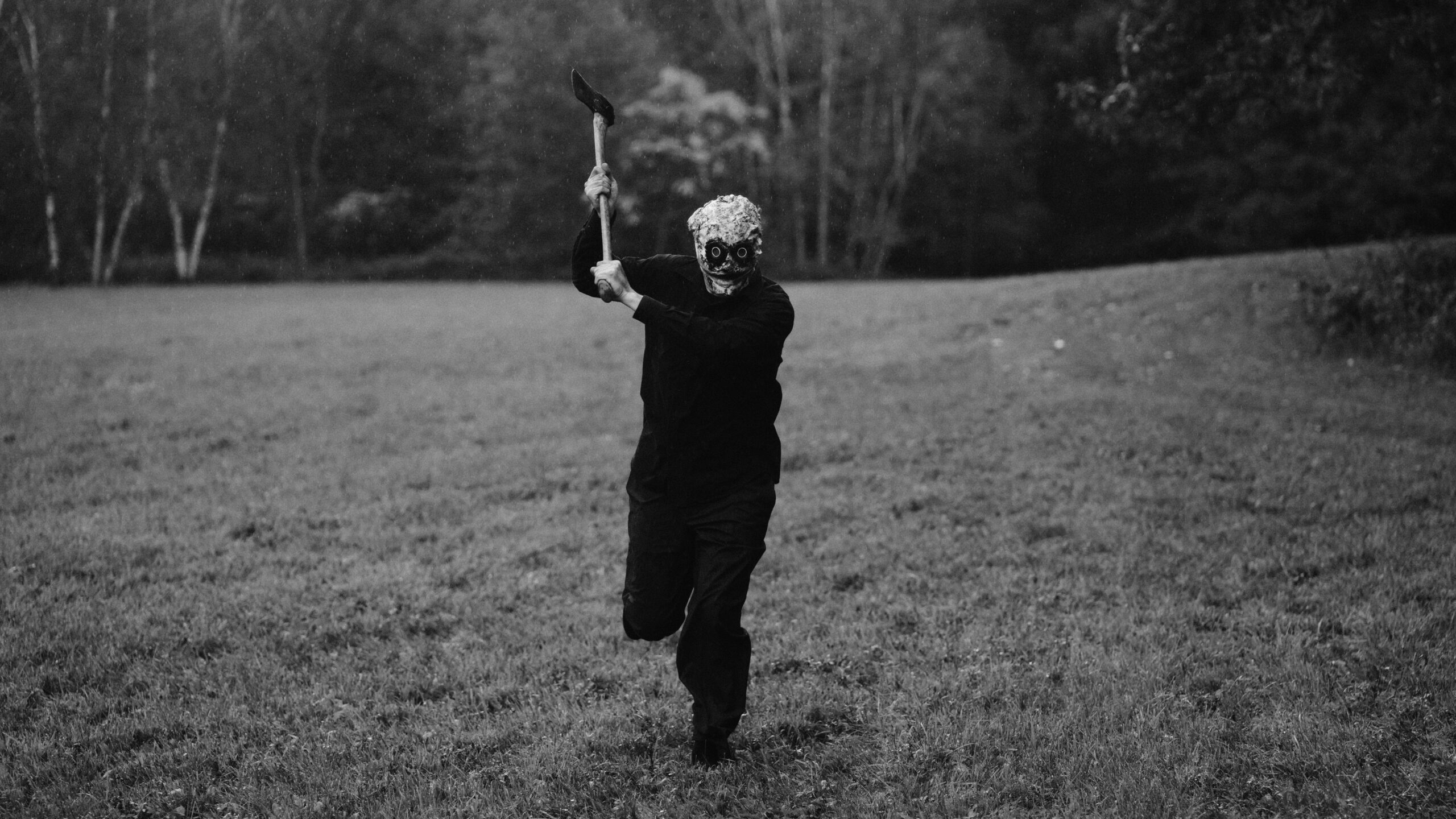Are you struggling to hit the bullseye consistently when axe throwing? This guide will help you enhance your accuracy and precision. We’ll cover essential techniques, including proper stance, grip, and throwing mechanics. You’ll learn how to select the right axe and practice effective drills to sharpen your skills. Mastering these techniques will improve your aim and impress your friends at the next axe-throwing session.
Key Takeaways
- Understanding axe rotation, distance, flight path, and force is crucial for improving throwing accuracy
- Proper stance, grip, and body alignment form the foundation for consistent and precise throws
- Mastering the overhand throw technique and timing the release are essential for accurate throws
- Visualization, eye-hand coordination, and breathing techniques enhance aim and focus during throws
- Selecting the right axe type and maintaining its edge contribute to improved throwing accuracy
Understanding the Fundamentals of Axe Throwing Mechanics

Understanding axe-throwing mechanics is crucial for improving accuracy. This section explores how axe rotation affects precision, the impact of throwing distance on accuracy, the analysis of an axe’s flight path, and the influence of force and release angle. These fundamental aspects form the foundation for mastering axe-throwing techniques and enhancing overall performance.
The Role of Axe Rotation in Precision
Axe rotation plays a crucial role in achieving precision during axe throwing. How an axe spins as it travels through the air determines whether it will strike the target with its blade or handle. Proper rotation ensures the blade makes contact with the target, increasing the chances of a successful throw. Throwers must master the art of imparting the right amount of spin to the axe, considering factors such as the axe’s weight distribution and the distance to the target.
How Distance Influences Accuracy
Distance plays a crucial role in axe-throwing accuracy. As the distance between the thrower and the target increases, the axe’s flight time lengthens, allowing more variables to affect its trajectory. Considering release angle and force factors, throwers must adjust their technique to compensate for longer distances. Finding the optimal throwing distance for consistent accuracy requires practice and fine-tuning one’s technique.
Analyzing the Axe’s Flight Path
Analyzing the axe’s flight path is essential for improving accuracy in axe throwing. Throwers should observe the axe’s trajectory, noting its rotation and any deviations from the intended path. By understanding how factors like release angle, grip, and throwing force affect the flight path, throwers can make necessary adjustments to their technique. Regular practice and careful analysis of each throw help develop a keen eye for identifying and correcting issues in the axe’s flight.
Impact of Force and Release Angle
Force and release angle significantly impact axe-throwing accuracy. The thrower must apply the right amount of force to ensure the axe reaches the target with sufficient momentum. Simultaneously, the release angle determines the axe’s trajectory and rotation. Finding the optimal balance between force and release angle is crucial for consistent accuracy in axe throwing.
Establishing the Optimal Stance and Grip

Establishing the optimal stance and grip is crucial for axe-throwing accuracy. This section covers finding a balanced stance, proper hand placement, body alignment with the target, and avoiding common grip mistakes. These elements form the foundation for consistent and precise throws, helping throwers improve their technique and achieve better results.
Finding a Balanced and Stable Stance
A balanced and stable stance forms the foundation for accurate axe throwing. Throwers should position their feet shoulder-width apart, with the dominant foot slightly forward. This stance provides a solid base, allowing for smooth weight transfer during the throw and better control over the axe’s trajectory. Proper balance helps maintain consistency in throws and reduces the risk of off-target releases.
Proper Hand Placement on the Axe Handle
Proper hand placement on the axe handle is crucial for accuracy and control. Throwers should grip the handle near the bottom with their dominant hand, leaving enough room for the non-dominant hand to rest above it. This two-handed grip provides stability and better controls the axe‘s rotation during release. Experimenting with different grip positions helps throwers find the most comfortable and effective hold for their throwing style:
- Dominant hand placement near the bottom of the handle
- The non-dominant hand positioned above the dominant hand
- Firm but relaxed grip to maintain control
- Fingers wrapped around the handle, avoiding a death grip
Aligning Your Body With the Target
Proper body alignment with the target is crucial for consistent axe-throwing accuracy. Throwers should position their body perpendicular to the target, with their feet, hips, and shoulders aligned. This alignment ensures a smooth and natural throwing motion, allowing for better control over the axe’s trajectory. Throwers can practice their alignment by using a mirror or recording their throws to identify and correct any misalignments:
Avoiding Common Grip Mistakes
Avoiding common grip mistakes is essential for improving axe-throwing accuracy. Throwers should avoid gripping the axe too tightly, limiting wrist flexibility and hindering smooth release. Another mistake to avoid is placing the hands too far apart on the handle, which can reduce control and affect the axe’s rotation. Proper grip technique involves finding the right balance between a secure hold and relaxed hands:
Perfecting Your Throwing Technique for Consistency

Perfecting the throwing technique is crucial for consistent axe-throwing accuracy. This section covers the overhand throw, release timing, smooth follow-through, and technique adjustments. Mastering these elements helps throwers improve their precision and achieve better results. Each aspect builds upon the others, creating a solid foundation for accurate throws.
Step-by-Step Guide to the Overhand Throw
Overhand throwing is a fundamental technique in axe throwing. Throwers begin with the axe held overhead and arms extended back. They then bring the axe forward in a smooth, controlled motion, releasing it at eye level. The key is maintaining a consistent arm motion and release point for accuracy. Proper form ensures the axe rotates correctly during flight, increasing the chances of a successful throw:
Timing the Release for Maximum Accuracy
Timing the release is crucial for maximum accuracy in axe throwing. Throwers must let go of the axe precisely when their arm is parallel to the ground and their elbow is at eye level. This ensures the axe rotates correctly and reaches the target with its blade facing forward. Consistent release timing comes with practice and muscle memory, allowing throwers to achieve better precision in their throws.
The Importance of a Smooth Follow-Through
A smooth follow-through is essential for consistent axe-throwing accuracy. After releasing the axe, throwers should continue the arm motion in a fluid, controlled manner. This follow-through helps maintain the axe’s trajectory and rotation, reducing the likelihood of last-second deviations. By practicing a smooth follow-through, throwers can improve their overall technique and achieve more precise throws.
Adjusting Your Technique Based on Feedback
Adjusting technique based on feedback is crucial for improving axe throwing accuracy. Throwers should carefully analyze their throws, noting where the axe lands and how it rotates. They can make targeted adjustments to their stance, grip, or release by identifying patterns in their misses. Regular practice sessions with a coach or experienced thrower can provide valuable insights and help refine technique for better precision.
Enhancing Aim and Focus to Improve Accuracy

Enhancing aim and focus is crucial for improving axe-throwing accuracy. This section explores visualizing the target spot, developing eye-hand coordination, using breathing techniques to stay calm, and setting achievable goals. These skills help throwers improve their precision and track progress over time.
Visualizing the Target Spot
Visualizing the target spot is a powerful technique for improving axe-throwing accuracy. Throwers can enhance their focus by mentally picturing the exact point on the target where they want the axe to land. This practice helps train the brain to align the body’s movements with the desired outcome, increasing the likelihood of hitting the intended spot. By consistently visualizing successful throws, axe throwers can build confidence and improve their overall performance.
Developing Eye-Hand Coordination Skills
Developing eye-hand coordination is essential for improving axe-throwing accuracy. Throwers can enhance this skill through targeted exercises and practice routines. Regular drills focusing on hand-eye coordination, such as juggling or playing catch with small objects, can help improve overall throwing precision. Additionally, practicing with different axe weights and sizes can further refine coordination skills specific to axe throwing:
- Juggling exercises
- Playing catch with small objects
- Practicing with various axe weights
- Using target games to improve aim
Utilizing Breathing Techniques to Stay Calm
Utilizing breathing techniques helps axe throwers stay calm and focused during their throws. Controlled breathing reduces anxiety and steadies the hand, leading to improved accuracy. Throwers can practice deep belly breathing before and during their throws, inhaling slowly through the nose and exhaling through the mouth. This technique promotes relaxation and enhances concentration, allowing throwers to consistently maintain their composure and execute precise throws.
Setting Achievable Goals to Track Progress
Setting achievable goals helps axe throwers track their progress and improve accuracy over time. Throwers can start by establishing specific, measurable targets, such as hitting the bullseye several times in a practice session. As they reach these goals, they can gradually increase the difficulty, challenging themselves to achieve greater precision. Regularly assessing performance against these goals allows throwers to identify areas for improvement and adjust their training accordingly.
Selecting the Right Axe for Your Throwing Style

Selecting the right axe is crucial for improving throwing accuracy. This section explores different axe types, matching weight and size to strength, customizing handles for comfort, and maintaining sharp edges. Understanding these factors helps throwers choose equipment that enhances their performance and precision.
Choosing Between Different Axe Types
Choosing the right axe type is crucial for improving throwing accuracy. Throwers can select from various options, including throwing axes, hatchets, and tomahawks. Each type has unique characteristics that affect weight, balance, and rotation during flight. When selecting an axe type, throwers should consider their strength, style, and personal preferences. Experimenting with different options helps identify the most suitable axe for achieving consistent accuracy:
Matching Axe Weight and Size to Your Strength
Matching axe weight and size to a thrower’s strength is crucial for accuracy. Heavier axes require more power but offer stability, while lighter ones allow for quicker throws. Throwers should select an axe they can comfortably control throughout the throwing motion. Testing different weights helps identify the optimal balance between power and precision for each individual’s throwing style.
Customizing the Axe Handle for Comfort
Customizing the axe handle for comfort is essential for improving throwing accuracy. Throwers can modify the handle’s length, thickness, and texture to suit their grip and throwing style. Some throwers prefer adding grip tape or custom grips to enhance control and reduce slippage during throws. Experimenting with different handle modifications helps axe throwers find the most comfortable and effective setup for their needs:
- Adjusting handle length for optimal leverage
- Modifying handle thickness for better grip
- Adding grip tape or custom grips for improved control
- Smoothing or texturing the handle surface for comfort
Maintaining a Sharp Edge for Better Performance
Maintaining a sharp edge on an axe is crucial for better performance and accuracy in axe throwing. A sharp blade ensures clean cuts into the target, reducing bounce-outs and increasing the chances of sticking. Throwers should regularly inspect their axe edges and use proper sharpening techniques for optimal cutting performance. Keeping the blade well-maintained extends the axe’s lifespan and contributes to consistent throwing results.
Practicing Effective Drills to Sharpen Accuracy

Practicing effective drills sharpens axe-throwing accuracy. This section covers warm-up exercises, solo drills, partner practices, and strength training. These techniques help throwers develop skills, receive feedback, and improve physical readiness for precise throws. Incorporating these drills into regular practice routines enhances overall performance and consistency in axe throwing.
Warm-Up Exercises to Prepare for Throwing
Warm-up exercises prepare the body for axe throwing, improving flexibility and reducing the risk of injury. Throwers should begin with light stretches, focusing on the shoulders, arms, and wrists. Dynamic movements, such as arm circles and torso twists, help increase blood flow and loosen up muscles. A few practice throws with lighter axes or objects can help throwers get into the right mindset and refine their technique before moving on to full-intensity throwing sessions.
Solo Drills to Build Skills
Solo drills build essential skills for axe-throwing accuracy. Throwers can practice their stance and grip without releasing the axe, focusing on proper form and body alignment. They can also use a target drawn on a wall to practice their throwing motion without an axe, helping to develop muscle memory and consistency. Repetitive throwing at various distances improves accuracy and helps throwers understand how distance affects their technique.
Partner Practices for Constructive Feedback
Partner practices offer valuable opportunities for constructive feedback in axe throwing. Throwers can work in pairs, taking turns to observe and critique each other’s technique. This collaboration allows for immediate feedback on stance, grip, and release, helping throwers identify and correct issues they may not notice on their own. Partners can also challenge each other with friendly competitions, fostering a supportive environment for skill improvement:
- Observe and provide feedback on throwing form
- Analyze release timing and axe rotation
- Suggest adjustments for improved accuracy
- Engage in friendly competitions to boost motivation
Incorporating Strength and Flexibility Training
Incorporating strength and flexibility training enhances axe-throwing accuracy by improving overall physical readiness. Throwers can focus on exercises that target the muscles used in throwing, such as shoulder rotations, wrist curls, and core strengthening exercises. Regular stretching routines increase flexibility, allowing for a smoother throwing motion and reducing the risk of injury during practice sessions.
Conclusion
Mastering axe throwing accuracy requires a comprehensive understanding of mechanics, proper technique, and consistent practice. Throwers can significantly improve their precision and overall performance by focusing on fundamental aspects such as stance, grip, and release timing. Regular drills, partner feedback, and customized equipment selection further enhance accuracy and help throwers reach their full potential. Ultimately, the journey to becoming a skilled axe thrower demands dedication, patience, and a willingness to continually refine one’s approach, resulting in increased confidence and enjoyment of this challenging sport.

